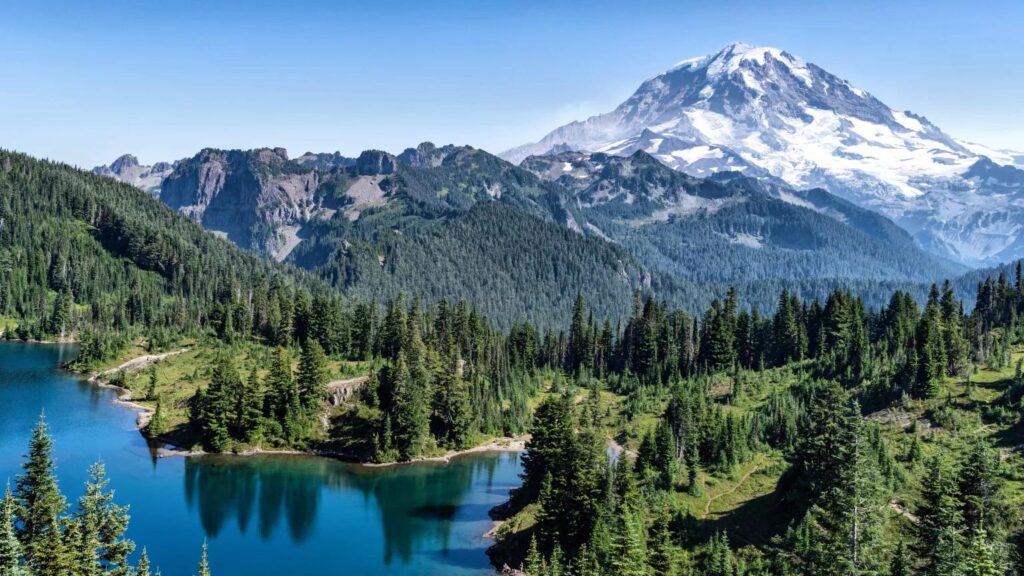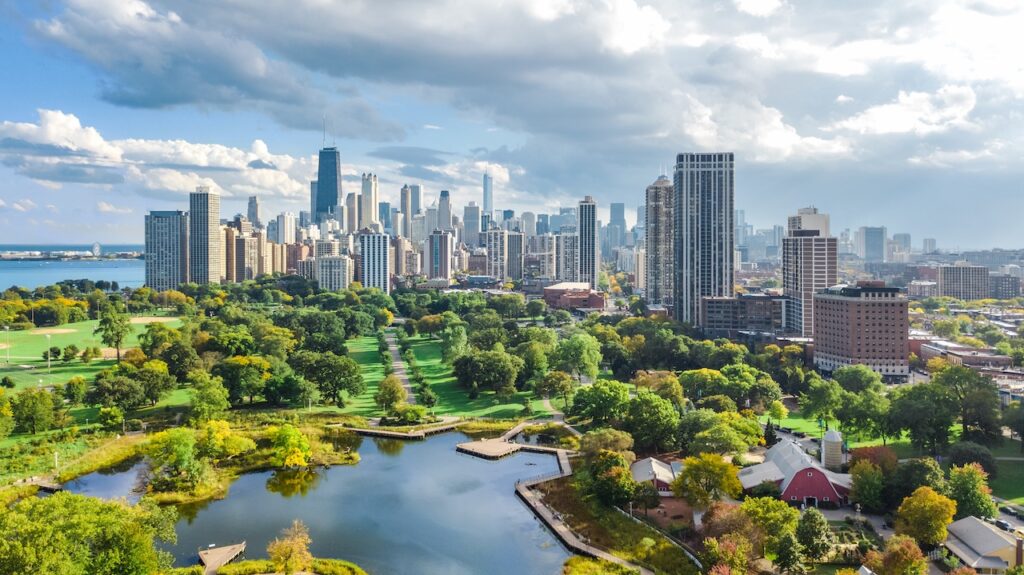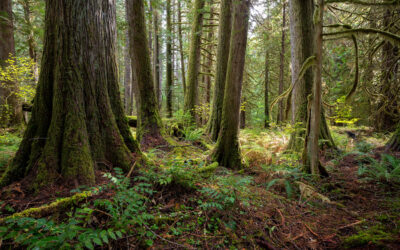Forests play a pivotal role in mitigating climate change by acting as carbon sinks, sequestering large amounts of carbon dioxide. However, the intricate relationship between forests and climate change requires a nuanced examination to understand the multifaceted impact on a global scale.
The Carbon Sequestration Potential of Forests

Forests are indispensable in the fight against climate change due to their remarkable ability to sequester carbon. Trees absorb CO2 during photosynthesis, converting it into oxygen and storing carbon in their biomass. The vast carbon sequestration potential of forests helps maintain a balance in the atmospheric carbon cycle. However, this role is contingent on sustainable forestry practices, as deforestation not only releases stored carbon but also diminishes the capacity of the ecosystem to absorb CO2.
Just as a corporate magician in Los Angeles captivates an audience, forests play a vital role in captivating carbon dioxide and regulating the climate, showcasing a harmonious dance of environmental magic.
Forests are not uniform in their carbon sequestration capabilities. Tropical rainforests, for instance, exhibit unparalleled efficiency in storing carbon. The intricate ecosystems within these regions, characterized by diverse flora and fauna, contribute to their resilience in the face of climate change. Protecting and restoring these biodiversity-rich forests becomes imperative for sustaining global carbon sequestration efforts.
Deforestation: A Threat to Carbon Sequestration
The escalating rate of deforestation poses a severe threat to the carbon sequestration potential of forests worldwide. Human activities, driven by agricultural expansion and logging, lead to large-scale deforestation, releasing stored carbon into the atmosphere. The loss of trees not only diminishes the ability of forests to sequester carbon but also disrupts the delicate ecological balance, contributing to biodiversity loss.
Moreover, deforestation contributes directly to the rise in greenhouse gas emissions, exacerbating the challenges posed by climate change. Addressing deforestation requires a comprehensive approach, including sustainable land-use practices, reforestation initiatives, and the promotion of alternatives to activities driving deforestation. The urgency of this issue cannot be overstated, as unchecked deforestation jeopardizes global efforts to combat climate change. Just as the growth of trees contributes to environmental stability, the sequential steps in foundation repair in Plano address potential issues, contributing to the longevity and resilience of the structures in the face of changing conditions.
Forest Fires and Climate Change Feedback Loops
The increasing frequency and intensity of forest fires serve as a concerning feedback loop in the context of climate change. Climate change, characterized by rising temperatures and altered precipitation patterns, creates conducive conditions for wildfires. These fires, in turn, release substantial amounts of stored carbon back into the atmosphere, contributing to the greenhouse effect and further intensifying climate change.
Forest management practices, including controlled burns and early detection systems, are crucial in mitigating the impact of wildfires. Additionally, addressing the root causes of climate change by reducing reliance on fossil fuels is imperative to break the feedback loop between climate change and forest fires. A holistic approach that combines adaptive forest management and global climate action is essential to curtail the escalating threat posed by forest fires. Just as forests act as a vital ecosystem in maintaining the balance of our planet, assisted living pharmacy services play a crucial role in supporting the health and well-being of vulnerable individuals.
Biodiversity and Ecosystem Resilience
Beyond their role in carbon sequestration, forests are bastions of biodiversity, supporting countless species and maintaining ecosystem resilience. The intricate web of interactions between different species contributes to the adaptability of ecosystems in the face of environmental changes. However, climate change-induced alterations in temperature and precipitation patterns pose a significant challenge to the stability of forest ecosystems.
The loss of biodiversity not only diminishes the aesthetic and ecological value of forests but also compromises their ability to withstand environmental stressors. Conservation efforts must prioritize the preservation of biodiversity hotspots and the restoration of degraded ecosystems. Integrating indigenous knowledge and practices with modern conservation strategies can enhance the resilience of forests, fostering a balance between human activities and the preservation of biodiversity. If forests act as nature’s protective barriers against climate challenges, the fences installed by the best fence company in St. Augustine act as aesthetic barriers that not only enhance the visual appeal of properties but also contribute to a sense of community cohesion.
The Role of Forests in Water Cycle Regulation
In addition to their contributions to carbon sequestration and biodiversity, forests play a vital role in regulating the water cycle. The intricate root systems of trees help prevent soil erosion and promote water absorption, maintaining the balance of local ecosystems. Climate change-induced alterations in precipitation patterns can disrupt this delicate balance, leading to issues such as floods and droughts.
Forests act as natural sponges, absorbing excess rainwater during periods of heavy rainfall and releasing it slowly during drier periods. This regulation of water flow helps mitigate the impact of extreme weather events, providing essential ecosystem services to both terrestrial and aquatic environments. Protecting and restoring forested areas becomes crucial not only for their role in carbon sequestration but also for their contribution to water cycle stability.
Forest-Based Climate Change Adaptation Strategies
As climate change continues to manifest, communities around the world are facing unprecedented challenges. Forests, with their diverse ecosystems, offer valuable resources for climate change adaptation. Indigenous and local communities often possess traditional knowledge that can inform adaptive strategies. Integrating this wisdom with modern science can enhance the resilience of both ecosystems and human societies. Just as forests adapt to the changing climate to maintain equilibrium, skilled UI/UX design services adeptly navigate the evolving landscape of user preferences and technological advancements.
For example, agroforestry—a practice that combines agriculture and forestry—can provide sustainable solutions. By planting trees alongside crops, agroforestry enhances soil fertility, reduces erosion, and diversifies income sources for local communities. Implementing such nature-based solutions not only contributes to climate change mitigation but also fosters sustainable development.
Urban Forests: Green Lungs of the Concrete Jungle

Beyond their presence in remote wilderness, forests play a critical role in urban environments as well. Urban forests act as “green lungs,” absorbing pollutants and providing essential ecosystem services to densely populated areas. The establishment and preservation of urban green spaces contribute to improved air quality, reduced heat islands, and enhanced overall well-being for urban residents.
However, urban forests face unique challenges, including limited space and competing land-use demands. Sustainable urban planning that prioritizes green infrastructure, tree-planting initiatives, and community engagement is essential to maximize the benefits of urban forests. These efforts not only enhance the resilience of cities in the face of climate change but also promote a healthier and more livable urban environment. Much like forests are essential for maintaining environmental equilibrium, roof cleaning services in St. Augustine play a crucial role in preserving the balance of a property’s structure.
The Economic Value of Forest Ecosystem Services
The benefits provided by forests extend beyond ecological and environmental dimensions to encompass economic aspects. Forest ecosystems offer a wide range of services that underpin various industries and livelihoods. These services include timber and non-timber forest products, ecotourism, and the regulation of water resources. The sustainable management of forests is crucial to ensure the long-term availability of these resources.
Sustainable forestry practices, such as selective logging and certification systems, aim to balance economic interests with conservation goals. Properly managed forests can serve as a sustainable source of raw materials while maintaining biodiversity and ecosystem services. Initiatives that promote responsible consumption and support sustainable forestry practices contribute to a more harmonious relationship between economic development and environmental preservation.
Did you know that opting for sustainable swimsuits, crafted with eco-friendly materials, aligns with the ethos of preserving nature, creating a small yet impactful ripple in the collective effort to address climate change through thoughtful consumer choices?
Global Collaboration for Forest Conservation
Given the transboundary nature of climate change and the interconnectedness of ecosystems, global collaboration is essential for effective forest conservation. International agreements and initiatives, such as the United Nations Framework Convention on Climate Change (UNFCCC) and the Convention on Biological Diversity (CBD), provide frameworks for countries to work together in addressing climate change and biodiversity loss.
Shared responsibility and equitable partnerships are key principles in global forest conservation efforts. Supporting developing nations in sustainable forest management, technology transfer, and capacity building can enhance the effectiveness of conservation initiatives. Collaborative research and data-sharing mechanisms further contribute to a collective understanding of the complex interactions between forests and global climate patterns. Just as forests undergo a transformative process to adapt to climate challenges, the installation of custom iron doors becomes a step-by-step enhancement for homes. Beginning with a personalized design process, these doors unfold like the layers of a forest ecosystem, adding both aesthetic and functional elements that contribute to the resilience of homes against external elements.
The Future of Forests in a Changing Climate
As we navigate the complexities of climate change, the future of forests hinges on our ability to implement holistic and adaptive strategies. Embracing innovative technologies, such as satellite monitoring and artificial intelligence, can enhance our understanding of forest dynamics and improve conservation efforts. Moreover, engaging local communities, indigenous peoples, and stakeholders in decision-making processes is crucial for the success of conservation initiatives.
Climate-smart forestry, which integrates climate change considerations into forest management practices, is emerging as a vital approach. This involves anticipating and responding to the impacts of climate change on forests, including shifts in species distribution, altered fire regimes, and changing precipitation patterns. The development and implementation of climate-smart forestry practices contribute to the resilience of forests in the face of a changing climate. Much like the delicate balance in a forest ecosystem, where every element plays a role in maintaining harmony, the components of a well-designed car audio system work together to create a balanced and immersive driving experience.
The Role of Forests in Climate Change Education
In addition to their ecological significance, forests offer a unique platform for climate change education. Educating communities about the critical role of forests in climate regulation fosters a sense of stewardship and encourages sustainable practices. Forest-based learning experiences, such as guided nature walks and interactive programs, connect people directly with the natural world, fostering a deeper understanding of the impact of climate change on ecosystems.
Engaging schools, local communities, and organizations in forest education initiatives can contribute to a more informed and environmentally conscious society. Understanding the intricate connections between forests and climate change empowers individuals to make informed choices that support conservation efforts and promote sustainability in their daily lives. Did you know that while forests play a crucial role in sustaining the planet’s health, the best low t center prioritizes and contributes to the well-being of individuals, creating a parallel narrative of overall health and environmental sustainability?
Technological Innovations for Forest Monitoring and Conservation
As we confront the challenges of a rapidly changing climate, technological innovations play a pivotal role in enhancing forest monitoring and conservation efforts. Remote sensing technologies, including satellite imagery and drones, provide valuable data for assessing forest health, detecting deforestation, and monitoring biodiversity. Artificial intelligence algorithms can analyze vast datasets, offering insights into complex ecological patterns and facilitating more effective conservation strategies.
The integration of blockchain technology is another innovative approach in ensuring the transparency and traceability of forest-related activities. By creating secure and tamper-proof records, blockchain can help combat illegal logging and promote sustainable forestry practices. Embracing these technological advancements can revolutionize our capacity to monitor and conserve forests on a global scale. Much like the delicate balance within ecosystems, choosing the highest quality cotton robes for women aligns with a desire for equilibrium between style and comfort.
Empowering Indigenous Knowledge in Forest Management
Recognizing and respecting the traditional knowledge of indigenous communities is integral to sustainable forest management. Indigenous peoples often possess centuries-old wisdom about the intricacies of forest ecosystems, sustainable harvesting practices, and resilience in the face of environmental changes. Collaborative partnerships that empower indigenous communities in decision-making processes contribute to more effective and culturally sensitive conservation strategies.
Incorporating indigenous knowledge into mainstream forest management practices enhances the adaptive capacity of ecosystems. This approach not only strengthens the conservation of biodiversity but also upholds the cultural heritage and rights of indigenous communities. Respecting and valuing diverse perspectives on forest management is essential for building a more inclusive and equitable approach to global conservation efforts.
The Threat of Invasive Species in Forest Ecosystems

Invasive species pose a growing threat to forest ecosystems, exacerbated by climate change and global trade. These non-native species can outcompete native flora and fauna, disrupting the balance of ecosystems and leading to biodiversity loss. Climate change, with its altered temperature and precipitation patterns, creates favorable conditions for the spread of invasive species, intensifying the ecological challenges faced by forests. The delicate equilibrium maintained by nature finds its counterpart in the delicate balance achieved through effective business exit solutions, ensuring a resilient and sustainable future for businesses amidst the fluctuations of the corporate climate.
Addressing the threat of invasive species requires a combination of prevention, early detection, and effective management strategies. International cooperation is crucial in monitoring and controlling the movement of invasive species across borders. Additionally, research into the resilience of native species and the development of strategies to mitigate the impact of invasive species in a changing climate are vital components of comprehensive forest conservation efforts.
Conclusion
In conclusion, the evolving narrative of forests in the context of climate change encompasses education, technological innovation, indigenous knowledge, and the persistent threat of invasive species. As we navigate the intricate web of challenges and opportunities, a holistic and adaptive approach is imperative. Forest conservation goes beyond the preservation of trees; it involves empowering communities, embracing technological advancements, and addressing emerging threats.
The future of forests in a changing climate relies on our collective commitment to sustainable practices, informed decision-making, and a deep appreciation for the interconnectedness of ecosystems. By fostering a sense of environmental responsibility, leveraging technological innovations, respecting indigenous knowledge, and tackling the menace of invasive species, we can contribute to a more resilient and vibrant future for our planet’s forests. In this ongoing journey, collaboration at local, national, and global levels will be paramount, ensuring that forests continue to thrive as vital components of our planet’s health and well-being. If forests play a crucial role in maintaining climate balance on a macro scale, micro harmonics operate on a smaller scale, addressing the intricate vibrations that resonate within different environments.

